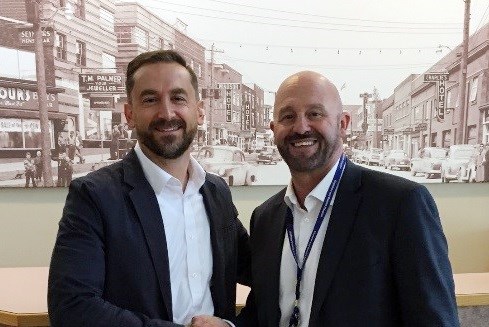The North East Local Health Integration Network (North East LHIN) covers more than 565,000 square kilometres.
Planning and delivering care across this vast expanse can be a challenge but technology is bridging the gap and bringing care closer to home.
“Technology plays a key role in being able to quickly connect people to the care they need, as close to where they live as possible,” said Jeremy Stevenson, Chief Executive Officer of the North East LHIN. “Technology and health care need to go hand-in-hand and the North East LHIN continues to work with partners across the region to increase the use of digital health.”
Some recent digital health advancements across Northeastern Ontario, North East LHIN region include
Connecting with care through Telemedicine and eConsult
The North East LHIN region is one of the province’s highest users of Telemedicine, via the Ontario Telemedicine Network (OTN). The latter uses two-way videoconferencing technology to connect patients with clinical health care delivered remotely by providers across Ontario. The North East LHIN had the highest use of the network in the province this past year with 117,000 hosted clinical events.
eConsult also helps patients to access care regardless of location by enabling physicians and nurse practitioners to communicate with specialists across Ontario via a private and secure webpage.
A referring provider can ask a specialist questions about their patient and receive advice quickly and securely without the need for the patient to visit the specialist directly. The North East LHIN had over 4,700 consults sent this year, making it one of the largest users of the system.
Helping patients manage chronic conditions through virtual care
Telehomecare is a virtual care program that uses remote monitoring equipment to support patients with Chronic Obstructive Pulmonary Disorder or Chronic Heart Failure. Patients are connected with a North East LHIN nurse who monitors their health and provides regular health coaching sessions. Patients gain confidence and learn to take control of their health while staying at home. The North East LHIN has the highest amount of patients served via Telehomecarewith 539 patients this past year alone. Statistics show approximately an 80 per cent decrease in Emergency Department visits by patients using the program and a reduction of hospital admissions of almost 78 per cent.
Connecting 24 hospitals with ONE
ONE is a project involving the North East LHIN and 24 acute care hospitals. The vision is “one person, one record, one system” to use common technology, an integrated electronic medical record system, and clinical standards based on hospital best practices. When ONE is fully implemented, patients and care providers will benefit from a world-class system. Northeastern Ontario will become one of only a few regional health care networks to use a single Health Information System. Northern hospital patients will benefit from having a complete patient record that moves with them within and between Northeastern Ontario hospitals thus reducing unnecessary tests and improving patient safety. In 2018, ONE started its first wave of transforming patient care, beginning with work to create a new Health Information System at North Bay Regional Health Centre, Sault Area Hospital, and West Parry Sound Health Centre.
Using eReferral and intake process for North East Joint Assessment Centre patients
As part of a provincewide vision to ensure timely access to high-quality, integrated musculoskeletal care, the North East LHIN helped to launch an eReferral and intake process in 2018 for the region’s six North East Joint Assessment Centres, located in Little Current, North Bay, Parry Sound, Sault Ste. Marie, Sudbury and Timmins. Now, patients can receive email updates to keep them informed about developments with their referral, the ability to confirm appointment dates and times by email, and the use of secure data encryption to transfer information. More than 1,400 eReferrals were processed by the new system from the time of its mid-August launch until early December.



